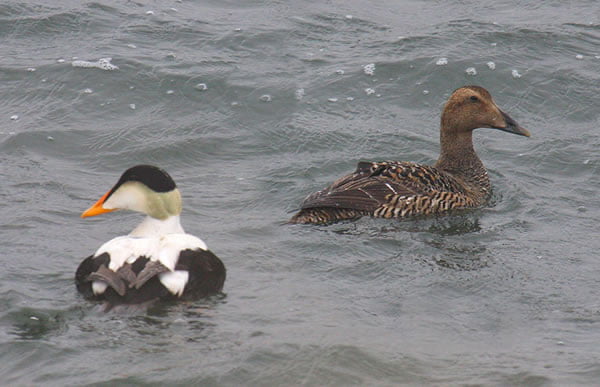Evaluating the Pathogenesis of Avian Influenza Virus in Priority Sea Ducks

Project Number: 180
Year Funded: 2025
Lead Institution(s): USGS Eastern Ecological Science Center
Project Lead: Diann Prosser
Collaborator(s): Richard Webby (St. Jude's Children's Research Hospital), Nichola Hill (UMass Boston), Johanna Harvey (University of Rhode Island), Alicia Berlin (USGS)
Location: Atlantic Flyway
Focal Species: Common Eider (Somateria mollissima), Surf Scoter (Melanitta perspicillata)
Project Description: While avian influenza viruses have long circulated in wild waterfowl and gulls, previous efforts have demonstrated that sea duck species traditionally express low rates of active infections but high antibody prevalence suggesting that such viruses pose little threat to these species. However, the emergence of a new strain of H5N1 in 2020 dramatically changed the disease dynamics for wild birds, including sea ducks, with large scale mortalities observed in species such as Common Eider, Bufflehead, and Common Merganser. Despite these mortalities, studies that elucidate minimum viral loads for infection, clinical effects, virus shedding and duration, and ability for different species to transmit disease is widely unknown beyond for some focal dabbling duck species. Challenge studies would help inform susceptibility of these species, with special emphasis on juvenile individuals that appear to be especially vulnerable in wild settings. Addressing this information gap could also help managers assess population level risks given the recurrent nature of the ongoing HPAI outbreak. The overarching goal of this project is to improve our understanding of how both low and highly pathogenic avian influenza viruses impact sea ducks and understand the potential conservation implications of the current outbreak on these species. We aim to build capacity with St. Jude Children’s Research Hospital to perform challenge studies with sea duck species, which require special infrastructure within the laboratory environment not commonly found in such facilities. Building this capacity will allow the project team to leverage laboratory space at St. Jude along with the breeding populations within our captive sea duck colony so that studies can be readily performed, now and in the future, to answer these questions. It should be noted that while this proposal focuses on Surf Scoters and Common Eiders, we are striving to use this funding as an opportunity to establish the capacity to perform additional work on our broader range of species.
Project Reports:
